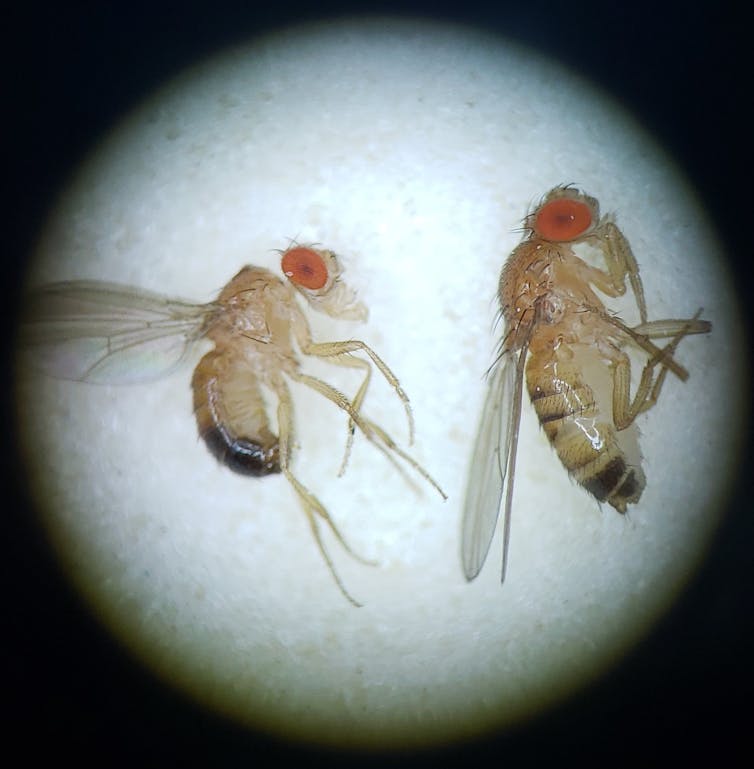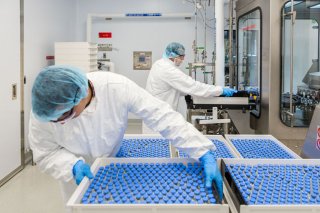How Sound Science Will Help Us Create a Coronavirus Vaccine
The current pandemic, and maybe even more importantly the next one, will be beaten in the laboratory by strong fundamental science that informs smart medical responses and public policy.
The current pandemic, and maybe even more importantly the next one, will be beaten in the laboratory by strong fundamental science that informs smart medical responses and public policy.
Globally, the research community is galvanized to fight this virus: researchers are developing ways to reuse personal protective equipment, devising better treatments for people who have been infected, creating vaccines and trying to understand what makes this virus so deadly.
One of the major issues in fighting the COVID-19 pandemic is that we simply don’t understand why SARS-CoV-2 — the coronavirus that causes the disease — is so dangerous. We do know that its deadly nature is a function of small genetic changes, called mutations, which distinguish it from other viruses. But which mutations?
SARS-CoV-2 is a close relative of SARS-CoV, the virus that caused the 2003 SARS outbreak, but even between these closely related viruses there are around 6,000 genetic differences (a staggering 20 per cent of the genome). Between these two SARS viruses and other, far less deadly coronaviruses there are even more mutations.
Deadly variations
Which of these changes, or combination of these changes, makes SARS-CoV-2 so deadly? This virus has 14 genes in its genome, coding for 27 proteins. Proteins are chains of amino acids and those 6,000 genetic differences result in 380 amino acid changes. It’s the changes in amino acids, and what those changes do to protein function, that give each virus its unique character.
SARS-CoV-2 is, like other coronaviruses, a sphere with spikes radiating out of it. In electron microscope images, these spikes form a crown — the corona that gives these viruses their name. In infection, the spikes attach to human cells and control the virus genes entering the cells. Different coronavirus spikes bind to different receptors on the cell surface. SARS-CoV-2 and SARS-CoV, for example, bind to different receptors than the MERS virus, resulting in different pathologies.
Every virus has its own form of these spikes, and this large amount of variation in these spikes is a challenge to, and possible solution for, creating a SARS-CoV-2 vaccine. Vaccines work by training your immune system to recognize an antigen, a specific aspect of an invader.
A challenge for creating a SARS-CoV-2 vaccine, or any vaccine, is that because virus surfaces vary so much, antigens change and a vaccine for one virus doesn’t recognize another. But, if we can identify something that we know is on the surface of a virus, we can possibly create a vaccine to that antigen. With SARS-CoV-2, its unique spike is just such a possible candidate and work characterizing the spike is underway.
Spiky science
Why do different spikes have different biology? The spikes are proteins, and the differences in spike binding and shape are a function of amino acid changes, but we don’t know which ones. In part, our lack of understanding reflects our ignorance of how amino acid changes affect protein shape and function. This is where fundamental science comes in.
My research group studies how amino acid substitutions change protein function and biology: the exact thing we do not understand about the variation in SARS-CoV-2. We study a protein called malic enzyme which converts the chemical compound malate to pyruvate in essentially all living organisms, including Drosophila melanogaster, the fruit fly we work with.

Like every protein, Drosophila malic enzyme is a string of amino acids folded into a three-dimensional form. You can picture this as a ball of rubber bands — if the rubber bands were all one long string, and the ball wasn’t necessarily round. This not-round aspect is important; the shape that a protein takes depends on the amino acids in that chain.
A protein’s shape is determined by how its sequence of amino acids packs. Change an amino acid and you change that shape and shape determines how proteins work. This hierarchy — amino acids determine shape, shape determines function — holds whether we are looking at a metabolic enzyme or a viral spike protein.
Drosophila malic enzyme is made up of almost 600 amino acids, but across the entire species, only two of these ever differ. At the first site, the two amino acids that we find, alanine or glycine, are fairly similar to each other, but substituting between the two actually changes the enzyme’s activity by almost 30 per cent, which is a big deal in biology. A closer look at this site may explain the difference in activity.
It is at the edge of the active site of the protein, the pocket in which the enzyme breaks down malate, and part of a helix, a twirl of amino acids forming a spiral staircase-like structure. Alanines form spirals but glycines do not. That 30 per cent difference in activity seems to result from a slightly shorter or longer spiral, a small difference leading to a subtle change in shape but very different biochemistry.
The second site tells a different story. At this site, the two amino acids, leucine or methionine, are also fairly similar to each other, but again we see a difference in biochemistry, here about a 40 per cent difference in the strength with which the enzyme binds to malate. The second site isn’t particularly near to any known structure, but is in a region of the protein in which the amino acids lie down in a sheet, interacting to form a pleated surface similar to a pleated skirt. The subtle difference between leucine and methionine likely changes the shape of this sheet, resulting in the difference in binding biochemistry.
Understanding both of these small differences helps us understand how amino acid variation leads to changes in protein function and gets us closer to predicting how other changes in other proteins, like a viral spike, alter their function.
Foundational understanding
Fundamental science is the basis of much of the work to develop a SARS-CoV-2 vaccine. Research from labs around the globe is getting us closer to beating the next pandemic. Our fly work is a small part of this process. As we get better and better at understanding protein variation, for example, we get better at designing new vaccines and possibly predicting which viruses have the potential to be deadly.
The COVID-19 pandemic is very unlikely to be the only such crisis we face. There are potentially millions of viruses that could pose threats to humans, not to mention other non-viral pathogens. Success in fighting these threats depends on strong science and strong funding for fundamental research into traditional and novel ways to fight infectious disease.
![]()
Thomas Merritt, Professor and Canada Research Chair, Chemistry and Biochemistry, Laurentian University
This article is republished from The Conversation under a Creative Commons license. Read the original article.
Image: Reuters

